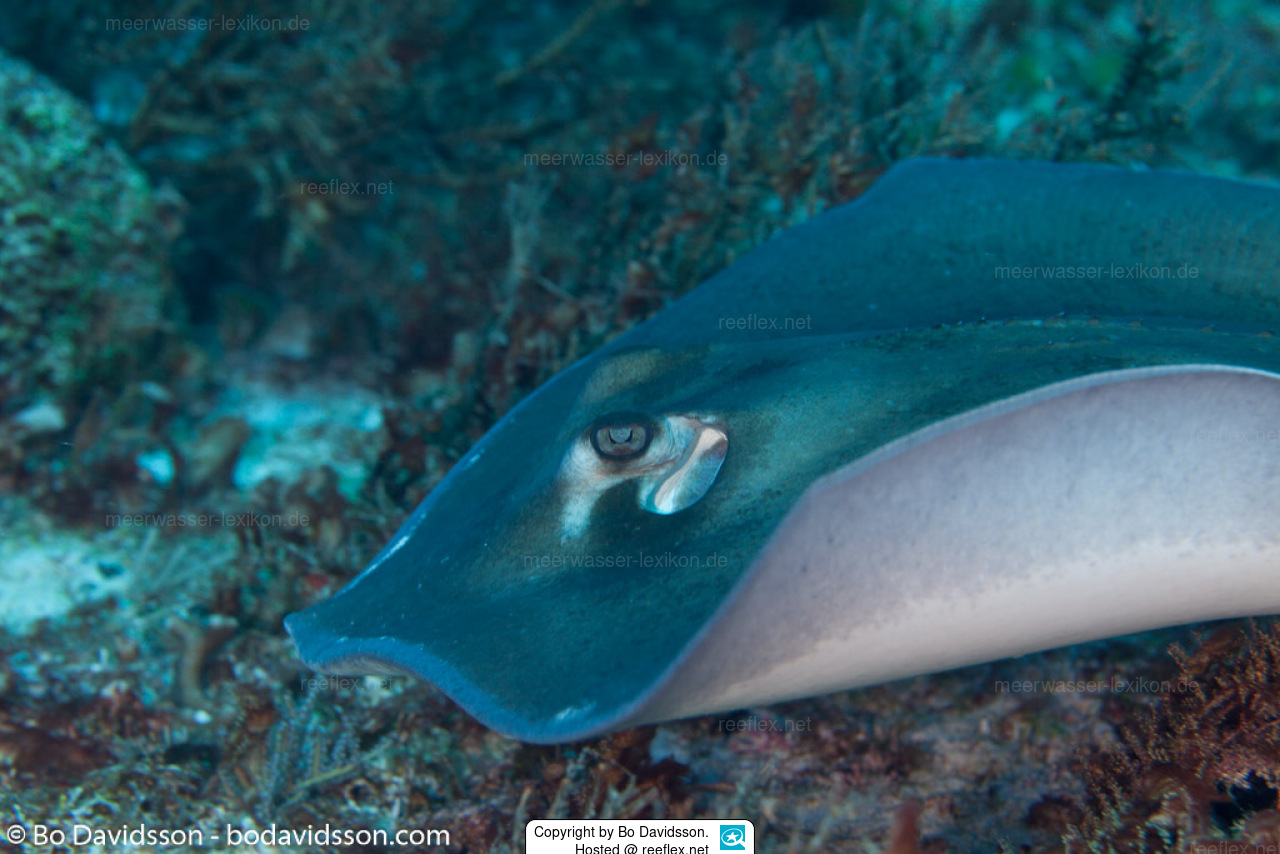Info
Hypanus americanus, also known as southern stingray or whip stingray, occurs in tropical and subtropical waters of the southern Atlantic Ocean, as well as the Caribbean and the Gulf of Mexico. It is most abundant near the coast of Florida and the Bahamas.
Like the most other rays, the southern stingray prefers shallow coastal or estuarine habitats with sandy or silty bottoms. As a ground-fish he avoids rugged and rocky structures such as reefs, because the hunt there is much more serious. Rays are usually solitary, rarely they are found in pairs or in larger groups. As Dasyatis americana is frequently found in estuaries, he also comes with the often over 32 ° C high temperature cope quite well.
Feeding constantly during the day and night, southern stingray feeds on large epibenthic prey such as teleosts and crustaceans. Other prey include stomatopods, mollusks, and annelids.
If you want to find out about the size of rays in specialist literature, usually written in English, you will often come across two abbreviations that ultimately mean the same thing: DW or WD.
If you look at FishBase, WoRMS or first descriptions of rays, you will find these abbreviations.
The total length including shoal is only rarely given, the TL.
Caution:
People have already died from stingray bites, including the well-known Australian documentary filmmaker, adventurer and zoo director of the Australian Zoo, Steve Irwin "The Crocodile Hunter" from Australia in 2006.
Even if the sting injuries are not fatal, the sting causes extremely painful and deep wounds in any case, and there is also a risk of parts of the sting breaking off in the wound and subsequent surgery becoming necessary.
The situation becomes particularly dramatic if toxins enter the body via the sting.
Occasionally beach visitors accidentally step on stingrays, some of which are buried in the sand near the beach, resulting in a painful, serious wound to the foot, so always wear bathing shoes as a minimum.
Snorkelers and divers should never swim over stingrays lying on the bottom, as the stingray can quickly fling its muscular, whip-like tail around and stab in defense.
In any case, seek medical attention immediately or seek immediate transportation to the nearest hospital.







 Bo Davidsson, Schweden
Bo Davidsson, Schweden











